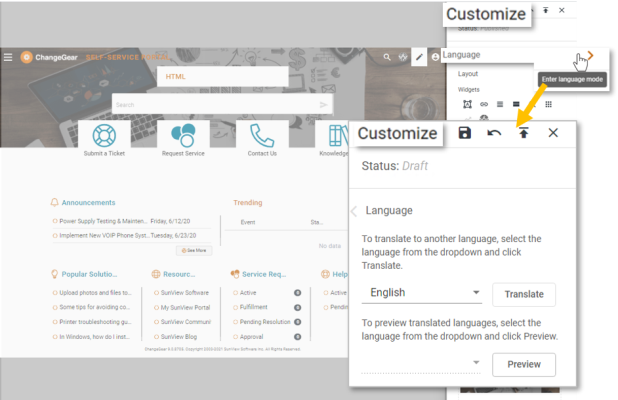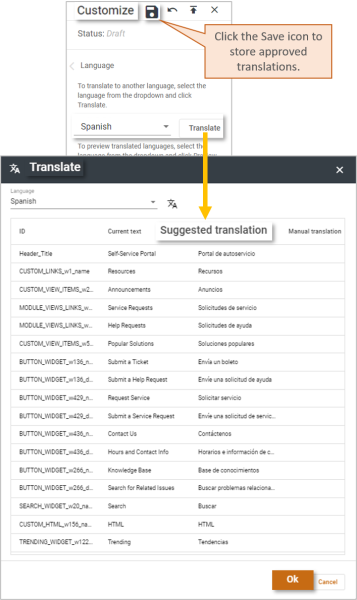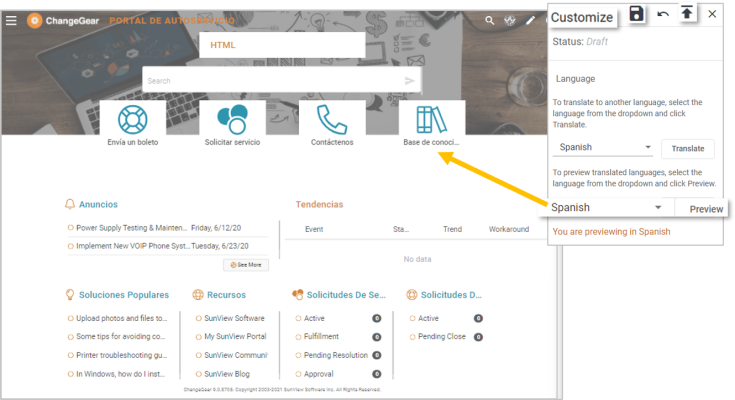Making Language Settings for Widgets and Descriptions
1. In the Customize slideout window, hover over the Language option to make it available for selection.
2. Click  to display the Language mode window.
to display the Language mode window.

3. Select the language into which you want existing text localized, then click Translate to display the Translate window with suggested translations for each widget.
Note: You can enter a manual translation that overrides any suggested translation (or if no suggested translation is provided). See Overriding Suggested Translations, as shown below.
4. Once you are satisfied with the translations, click OKto close the Translate window and return to the Customize slideout.
5. In the Customize slideout, click  to store the translated elements, and /or click
to store the translated elements, and /or click  to publish the translated page.
to publish the translated page.
Note: Once a page is published, you no longer see the option to save. Instead you have the options to leave the page with or without publishing the new content.
Previewing Translated Widgets and Descriptions
You can easily view translated widgets as they appear on the screen. This is a quick way to check for issues with space (e.g., is the translated word or phrase too long for the allotted space?) or just see how everything looks once translated.
While in the Language mode of the Customize slideout, select the language you want to review, then click Preview to display the localized widgets.

You can also use Manual Translations, as well as Translate the Rest of the Page.